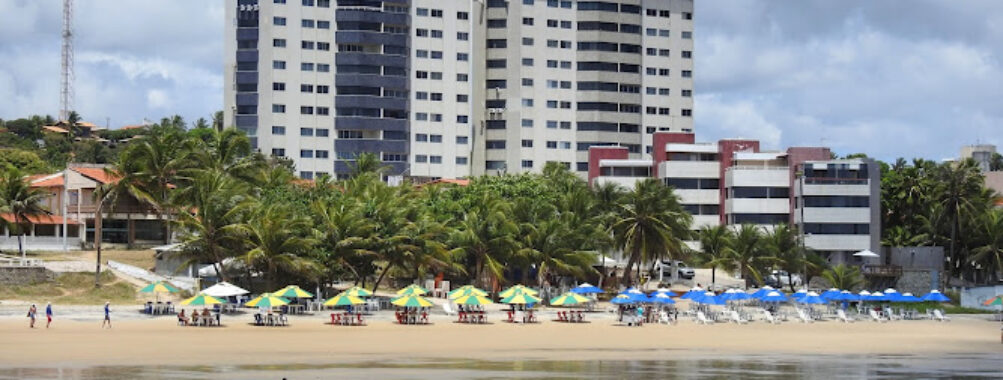
Praia de Pirangi
Table of Contents
Description
Praia de Pirangi is one of those places that travelers stumble upon and then can’t stop talking about later. Located along the southern coast of Rio Grande do Norte, it’s where the Atlantic Ocean meets wide stretches of golden sand, and the vibe is a mix of laid-back fishing village and lively holiday escape. What makes it particularly special is how it feels both familiar and surprising at the same time. You’ll find calm waters in some parts—perfect for families or anyone who just wants to float around without battling big waves—and then livelier sections where beach bars and local vendors keep the energy buzzing.
It’s also home to something that has become a bit of a legend: the world’s largest cashew tree. And yes, it really is enormous. Standing under its sprawling branches feels like stepping into another world, almost like a green forest canopy that just happens to be one single tree. For me, that moment was more memorable than any postcard sunset. It’s quirky, it’s unique, and it’s very Pirangi.
The area has its share of hotels and pousadas, which range from simple, family-run spots to more polished stays with pools and ocean views. Most travelers leave with positive things to say about the accommodations, especially about the friendly service and the unbeatable location right by the beach. Of course, not every detail is perfect—some places could use a little updating, and occasionally the service feels stretched during peak season—but overall, the atmosphere more than makes up for it.
What I personally love about Pirangi is how it balances relaxation with a bit of adventure. You can take a boat trip out to the natural pools, where the water is so clear you’ll see fish darting around your feet. Or, if you’re more of a land explorer, wander through the local markets and try fresh seafood dishes that taste like the ocean in the best possible way. It’s not a polished, luxury-only destination—it’s authentic, warm, and full of character.
Key Features
- Expansive golden sand beach with calm and swimmable waters
- Famous for the world’s largest cashew tree, a Guinness World Record holder
- Opportunities for boat tours to natural pools with crystal-clear water
- Mix of small hotels, guesthouses, and beachside restaurants
- Family-friendly areas with shallow waters and safe swimming spots
- Local markets offering seafood, crafts, and regional flavors
- Conveniently located close to Natal, making it easy for day trips
Best Time to Visit
The sweet spot for visiting Praia de Pirangi is between September and March, when the weather is mostly sunny, the sea is warm, and the evenings are pleasant enough for long walks along the shore. December and January bring a festive atmosphere with locals and visitors filling the beach, and while it can get crowded, the energy is infectious. If you prefer a quieter experience, aim for the shoulder months like October or early March, when the sun still shines but the crowds thin out.
Rainy season runs from April to July, and while showers don’t usually last all day, they can interrupt your beach plans. On the flip side, this is when the landscape looks especially lush, and hotel rates tend to be more affordable. So it really depends on your travel style—do you want the buzz of summer or the calm of the off-season?
How to Get There
Reaching Praia de Pirangi is straightforward, especially if you’re starting from Natal. The drive takes about 30 minutes, following the coastal road that offers glimpses of the ocean along the way. Taxis and ride-sharing apps are common, though many travelers prefer to rent a car for the flexibility to explore nearby beaches like Cotovelo and Tabatinga.
Public transport exists, but it’s not the most convenient if you’re carrying luggage or traveling with kids. Buses run between Natal and Pirangi, but schedules can be irregular, and the ride takes longer. If you’re the type who enjoys a bit of adventure, hopping on one of these local buses can be fun—it’s cheap, and you’ll get a slice of everyday life in the region. But if comfort is a priority, stick with a private transfer or rental.
Tips for Visiting
First things first: bring sunscreen. The sun here has a way of sneaking up on you, and even if you think you’re fine under an umbrella, you’ll probably end up with a tan line you didn’t plan for. Also, cash is handy. While many restaurants and hotels take cards, small vendors on the beach often don’t, and you’ll want to try their fresh coconuts or grilled shrimp skewers.
If you’re planning to see the cashew tree, go early in the morning before the tour buses arrive. It’s more peaceful, and you’ll have space to really appreciate its sprawling branches. For boat trips to the natural pools, check the tide schedule—low tide is when the pools are at their clearest and most beautiful.
One more personal tip: don’t rush. Pirangi isn’t the kind of place you “do” in a couple of hours. It’s best enjoyed slowly, with time to wander, chat with locals, and maybe even nap in a hammock after a seafood lunch. And if you’re staying overnight, try to catch the sunrise—it’s less famous than the sunset, but standing on the quiet beach as the sky turns pink is a memory that sticks with you.
Location
Places to Stay Near Praia de Pirangi
Find and Book a Tour
Explore More Travel Guides
No reviews found! Be the first to review!